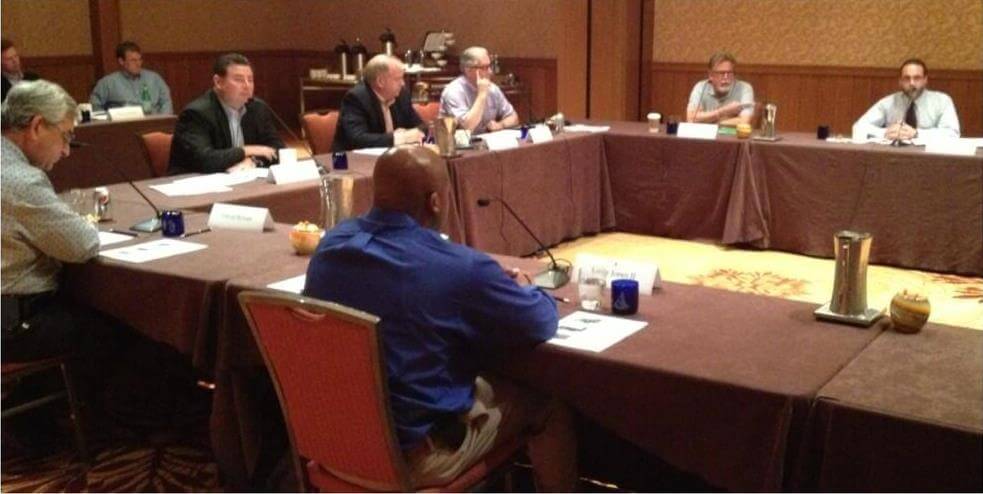By Darek Wieczorek, Principal Consultant, Tait Communications.

Delegates at the third P25 Best Practices Roundtable hosted by Tait Communications
The third and final P25 Best Practices Roundtable took place at Lake Tahoe, California, on July 25th. We narrowed our focus to shed light on those issues that hadn’t yet been explored fully in the previous two sessions. Much of the time was spent discussing system management issues, and — given that the cumulative experience in the room exceeded 250 years and included some very recent efforts — we learned some valuable points:
- System monitoring does not receive enough attention. This was probably fine when the systems were mostly hardware, stable and isolated from others. In today’s world of ever-increasing software content, frequent upgrades, sharing backhaul and facilities, the lackadaisical approach to monitoring is not sustainable.
- After implementing a wide range of alarms, it’s equally important to manage them and to make sure that the appropriate ones are directed to the correct parties at the optimal time. Too many can be as problematic as too few.
- Both the roles and desirable skill-sets of radio technicians are quickly changing. While a soldering iron may still prove handy now and then, the most important trait is the ability and willingness to learn about new technologies and to face the wide range of potential hardware, software, administrative and logistical challenges.
- Backhaul failures are very common. Radio network infrastructure failures are extremely rare.
- Network optimization in Public Safety has a different meaning than in commercial networks. Public Safety networks are, and should be, optimized for mission-critical reliability. Other aspects are secondary in nature.
- It’s not necessary to check every single device during factory acceptance testing, but the test build-out should be sufficient to allow you run all functional tests.
- The timing of training is critical. Technicians should be trained in advance of factory acceptance testing and installation, so that they can take full advantage of both. The users should be trained as close as possible to when they start using the system.
- There was no consensus on the need for a formal burn-in test, but the need for extensive and diligent field testing was commonly acknowledged.
- Don’t be afraid of system cut-over. A new system can be implemented gradually and a mix of logistical and simple technical measures can make the process quite manageable and non-disruptive.
- In proposal scoring, a measure of subjectivism cannot be avoided. Don’t spend too much time designing complex and elaborate scoring schemes.
- The number-one concern about P25 is still cost. Other concerns raised were voice quality, low tolerance for interference, and still-evolving standard documents.
- Many people mistake building out an 800MHz trunked P25 system for interoperability. You are not done when your system is up and running unless proper interoperability measures have been taken. Indeed, switching to P25 in some cases decreases your interoperability capabilities.
That was the third and final roundtable in the P25 best practices series. But stay tuned—we’ll be sharing much more information and insights from the discussions over the coming weeks.
Join the discussion in the P25 Best Practices LinkedIn Group.



